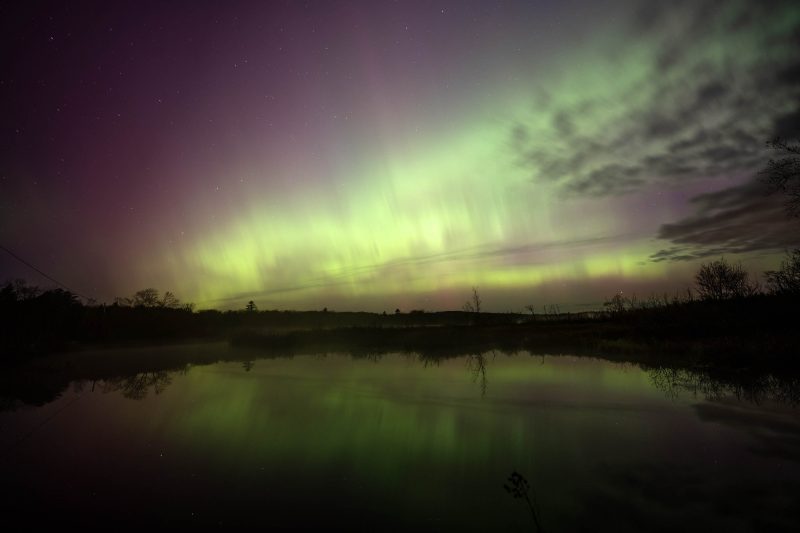(NEXSTAR) – Skywatchers across the country have had the chance to see stunning celestial displays already this year, from the total solar eclipse, the return of the “devil’s comet” and numerous nights colored by the northern lights. There’s also a chance we’ll see a “once-in-a-lifetime” explosive event bring a “new” star into the night sky for the first time in about 80 years.
There’s still a good chance we’ll see one of those galactic gems — the northern lights — again this summer.
In May, we saw solar storms strong enough to bring the northern lights as far south as Florida and Hawaii, areas that rarely see the aurora.
While most of the United States hasn’t seen the northern lights recently, that may soon change.
What causes the northern lights?
It’s solar storms — specifically solar flares and coronal mass ejections, or CMEs — that cause the northern lights. CMEs are, essentially, bursts of plasma and magnetic material that are ejected from the sun and into space.
If that material travels in the right direction, it can collide with Earth’s magnetic field, sending particles streaming toward the North and South Poles. Those particles will interact with gases in our atmosphere, creating excess energy that turns into bursts of light, known to us as auroras.
How far south the northern lights travel in the US is due to the strength of geomagnetic storms – the stronger they are, the further south the aurora can appear.
Why have the northern lights been so active lately?
The recent periods of auroral activity we have seen are largely due to where we are in Solar Cycle 25. During solar cycles, the sun reverses its poles. As the cycle peaks, the sun also becomes much more active.
Earlier this year, the largest solar flare in years was discovered, and more have been reported since then. This includes an M9.3 flare detected on June 23 in the same region that has produced six X-class flares (flags are ranked among the four classes, starting with B, then C, M, and finally, X). Unfortunately, the eruption was not predicted to bring the aurora to the US
The best part? We don’t seem to have reached the peak of Solar Cycle 25.
We may not reach solar maximum for several months yet, according to Mark Miesch, a researcher with NOAA’s Space Weather Prediction Center, tells Nexstar. At least, if you consider the solar maximum when we see the maximum number of sunspots or the maximum energy flow of certain radio waves.
Miesch, however, sees the solar maximum “as a period of enhanced activity.”
“Like the space weather version of hurricane season,” he explained. “According to this definition, solar maximum can last about 2 years or more. And if you define solar maximum that way, then I’d say we’re already at solar maximum and it’s likely to continue through late 2024 and into 2025.”
Will we see more northern lights soon?
According to Miesch, more solar storms are expected throughout the rest of this year, throughout 2025, and potentially into 2026.
While SWPC and scientists around the world keep an eye on the sun and try to predict what activity, if any, will eventually affect us, it can be difficult to say exactly when CMEs will hit Earth. Once the CMEs are within 1 million miles of our planet, it becomes easier, but the delivery time drops to about 15 to 45 minutes.
If current forecasts are correct and maximum solar activity continues for the next few months, at least some Americans will have a chance to see the northern lights again soon. As for whether they’ll make it to Florida and Hawaii again, you’ll have to stay tuned.






